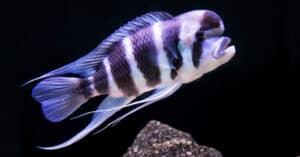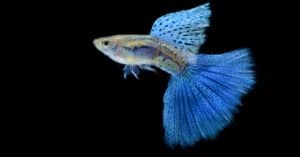When you purchase fish, they are usually secured in a plastic bag with water. This is common, whether purchasing from a pet store or having them shipped to you. Although the thought of staying in a plastic bag is unpleasant for us, remember that many fish can handle being in a bag for a few hours to a few days. However, there are several factors that can influence just how long fish can stay in the bag. We discuss these factors below!
Quick Answer
| Aquatic Livestock | Time |
|---|---|
| Fish: | 6 to 72 hours |
| Invertebrates (snails, shrimp): | 12 to 72 hours |
| Aquatic plants: | 1 to 5 days |
| Corals: | 12 to 72 hours |
How Long Can Fish Stay In a Plastic Bag?
On average, most fish can stay in a plastic bag with water for six to 72 hours. When we first get our fish, we usually rush to get them out of the bag as soon as possible. Many new fish keepers may also be uncertain whether transporting fish in a plastic bag is humane.
Furthermore, plastic bags are also the more affordable option for pet stores and online retailers that need to transport hundreds of fish safely. When done right, transporting fish in plastic bags is one of the safest options.
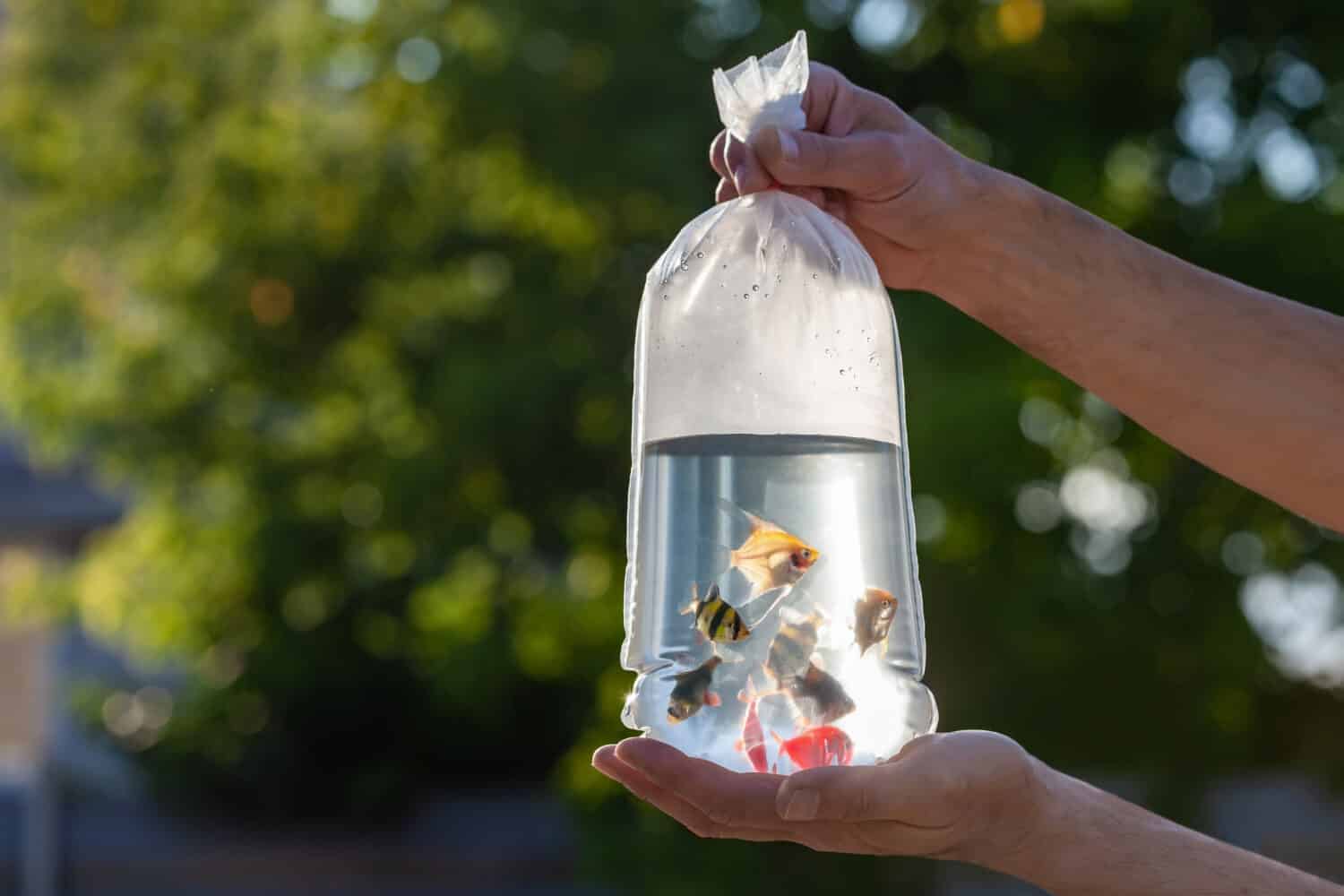
Most fish can stay in a plastic bag for up to three days.
©Klever_ok/Shutterstock.com
Most people will place the old aquarium water into the bag and secure it with an elastic bag once the fish are inside. The top part of the bag usually has trapped air inside to keep the bag from becoming flimsy and sloshing the fish around. Sometimes, the bag may be doubled up as a backup for any leaks or spills. When fish are transported long distances usually during shipping, they are placed inside a watertight Styrofoam box that may keep your fish safe if the bag was to open during shipping.
For fish that are going to be in transit for a long time, usually one to three days, online retailers may stabilize the temperatures by using ice or heating packs. This will ensure that your fish is going to be transported to you in low-stress and somewhat comfortable conditions.
Why Plastic Bags?
- Low-cost option
- Safe
- Reliable
- High success rate
Transporting fish and other aquatic animals in plastic bags has been used for decades. It seems to be the most reliable way to transport them both long and short distances. Ensuring that any fish you purchase has a stress-free transport to their new home is essential. Therefore, using a plastic bag is a good option. This method is generally quite successful, which is why it is the preferred method of transporting fish and other aquatic livestock. Both freshwater and saltwater fish can be transported in plastic bags with few risks.
Factors to Consider
There are several factors that should be considered to determine how long fish can stay in the bag.
Water Quality
Fish that are transported in clean and fresh aquarium water are likely to survive for longer in the bag than fish kept in dirty water. This is simply because their poop and waste products will foul the small amount of water in the bag quickly. This can lead to an ammonia spike in the bag, which is detrimental to many species of fish and invertebrates. When fish are stressed, they will start to poop more which can lead to water quality issues.
Some sellers will stop feeding the fish one to two days before shipping them out. This lowers the chances of the water fouling because of all their poop. The fish do not have to eat when they are in the bag, and most can survive without food for several days.
Oxygen
Fish can also run out of oxygen in the bag much quicker than in an aquarium, especially if a lot of fish are kept together in one bag. To prevent this, it is better to separate fish into separate bags. The smaller species of fish can be placed together much easier than the larger species. Keeping too many fish in one small bag is going to be much more stressful for the fish than splitting them up into smaller groups in the bags.
Temperature
Another factor to consider is the temperature.
If you are transporting tropical fish in a plastic bag, the water will start to cool down to room temperature. This can be stressful and dangerous for tropical fish who need to be kept in warm, heated water. This is where heating packs come in handy, especially if the fish are being transported overnight. If you are only buying tropical fish from a store and taking them straight home, you do not have to worry too much about the temperature.
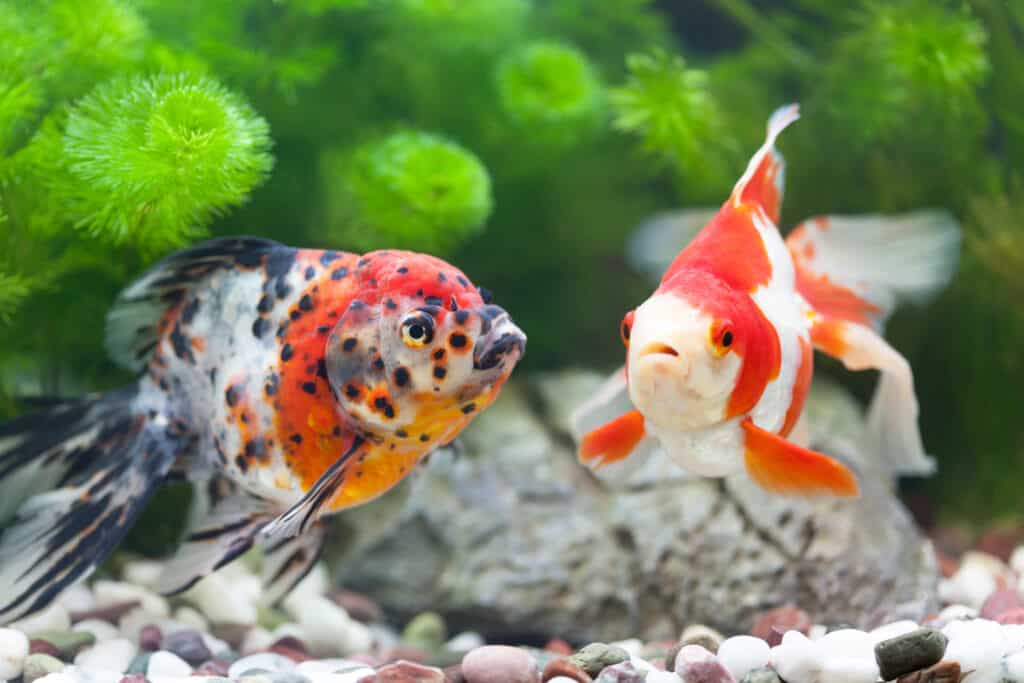
Goldfish are hardy enough to survive small fluctuating temperatures.
©yoshi0511/Shutterstock.com
Water Treatments
Certain medications are often used in plastic bags to ward off any diseases that can be caused by the fish getting stressed in the bag. It can also be used for tropical fish to prevent white spot disease from colder temperatures during shipping. This is why you might notice that the water in the bag is blue or green because it has been treated with medication.
However, these medications can be harmful for fish to be kept in for a long time. They can also lower the amount of oxygen in the water or interfere with a fish’s gills.
Stress
Fish can get very stressed when they are kept in the plastic bag for too long. Stress is not good for fish and can increase their chances of developing a disease. This is one of the main reasons fish can arrive to you in poor condition. Usually, because the shipping was too stressful for them.
The combination of poor water quality, unstable temperatures, and overcrowding in the plastic bag during transportation can be incredibly stressful for fish. A stressed fish isn’t going to be able to stay in the bag for very long. So, you will need to get them out as quickly as possible.
The Type of Fish
Certain species of fish are more sensitive to water changes and stressful situations than others. The more delicate species of fish likely won’t be able to survive in the plastic bag for as long as the hardier species.
Fish like guppies, goldfish, bettas, and many types of tetras are quite hardy and adaptable fish that can survive in a plastic bag for up to three days. This is only if the conditions in the bag are maintained, such as the water quality and temperature. The more sensitive species like angelfish, pea puffers, and discus may only be able to survive in the bag for six to 24 hours.
Acclimating Fish from the Plastic Bag
Once you have bought your fish home or received them from shipping, you will need to acclimate them. You shouldn’t just empty the bag into the aquarium. This is because the sudden changes in water parameters and temperature can put your new fish into shock. Instead, you will need to acclimate them first. The acclimation period doesn’t have to be time-consuming, but you want to avoid keeping them in the bag for long.
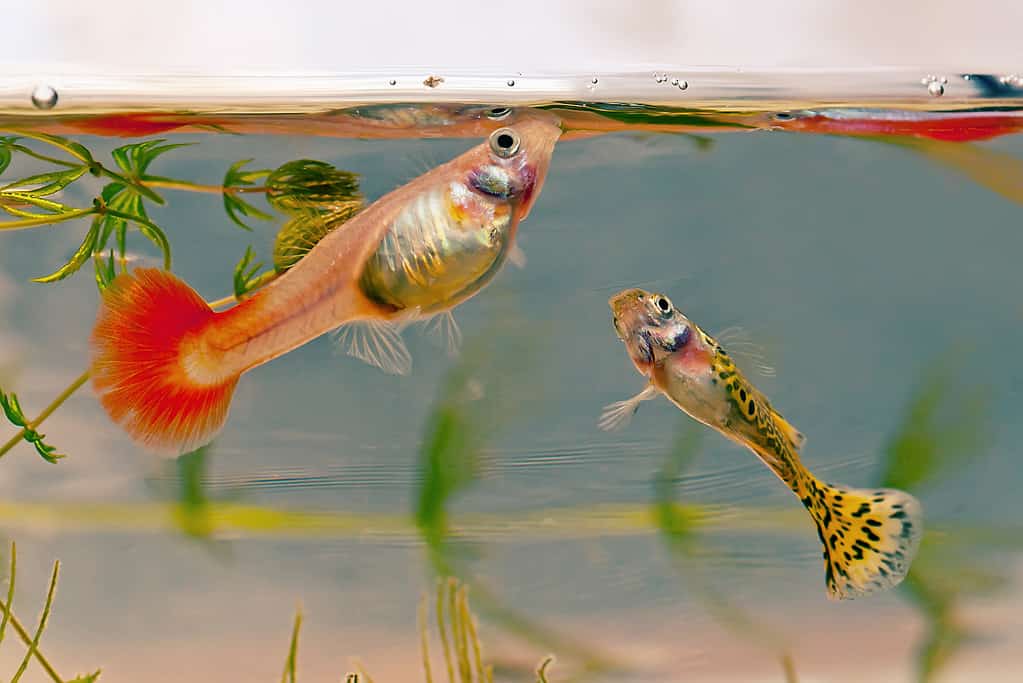
Fish can go into shock from sudden changes in water temperatures.
©LDiza/Shutterstock.com
When acclimating fish, you will need to adjust them to their new water conditions and temperature. Remember, the fish will have been kept in different aquarium conditions by the seller. They haven’t adjusted to their new water yet. If the fish haven’t been in the bag for very long, you can float the bag in the aquarium for up to two hours. This allows the bag’s water to adjust to the aquarium’s water temperature.
Alternatively, you can place them in a container filled with the water from the plastic bag and drip acclimate them. This involves letting water from the aquarium drip into the container of their original water from the bag. It allows the fish to adjust to the difference in temperature and water parameters.
Final Thoughts
Most fish are pretty hardy and can survive in the bag for up to three days. However, this is only if the bag has been prepared properly to transport the fish for that duration. The water in the plastic bag needs to be filled with clean and fresh water from the original aquarium. It should ideally have air trapped at the top of the bag. Once the fish have reached their new home, you will need to acclimate them to their new aquarium conditions.
Thank you for reading! Have some feedback for us? Contact the AZ Animals editorial team.




